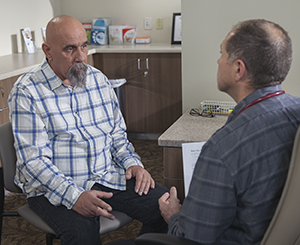Injections or surgery may help if you have pain or movement problems from osteoarthritis that severely limit your activities. Your healthcare provider can tell you more about how these treatment choices can help. They can also tell you about their risks and complications.
Injections
Medicine can be injected directly into the affected joint. These shots take a few minutes and are done in your healthcare provider’s office:
-
Corticosteroid or steroid injections. These shots may ease swelling and pain. The medicine is injected into the joint—for instance, the knee or hip. Steroid injections do have risks. So providers limit the number of shots used in any 1 joint to no more than 3 or 4 shots per year for each weight-bearing joint. Even this amount may harm cartilage if shots are done on a regular basis.
-
Lubricant supplementation injections. These shots use hyaluronic acid, a substance similar to one found naturally in the joint. It may help the joint work more smoothly. But there is not a lot of evidence to prove they are helpful These injections are only for mild to moderate osteoarthritis (OA) of the knees. They are used in people who have not responded to conservative nonmedicine treatments, pain relievers, or both combined.
Surgery
Choices for surgery include:
-
Arthroscopy. The surgeon looks at and works inside the joint using special tiny tools put through very small cuts (incisions). The cartilage is smoothed. Any pieces of cartilage that have broken off are removed.
-
Total joint replacement. The entire joint is taken out. It is replaced with an artificial joint using metal, ceramic, or plastic. This is most often done with the knee or hip joint.
-
Other surgery. There are other surgical procedures specific to certain joints. For instance, joint resurfacing may be done on the hip joint.
Featured in


